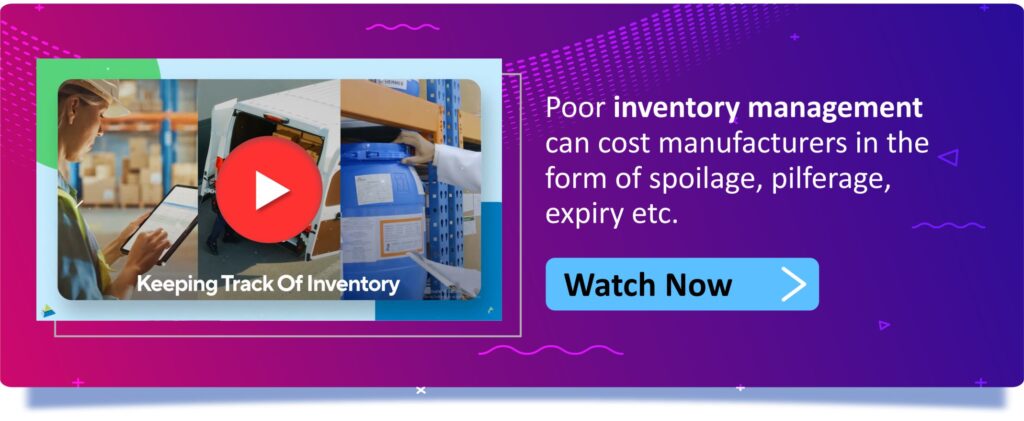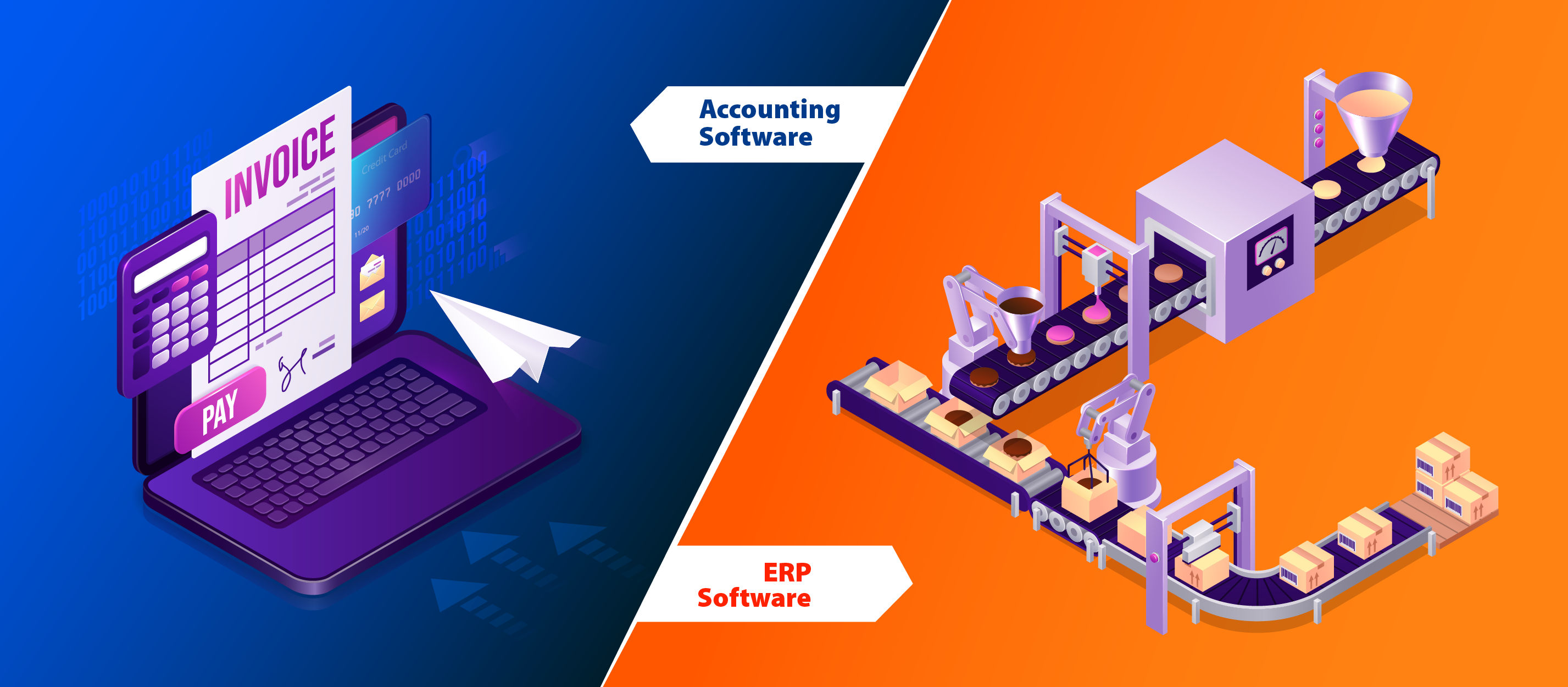
We all buy products, right? But have you ever thought where were those products lying before coming into your hand? Ofcourse in the shops! But before shops, where were they?
They were in the warehouses and were referred to as Inventories.
So, when we say inventory control, we simply mean stock control. This includes purchasing, receiving, tracking, warehousing and storage, shipping, turnover and reordering.
Why do we need inventory control?
Simple- to maximise profits without putting much money on inventory and disturbing customer satisfaction levels.
Inventory control also tell us where the stock is, how much of particular item is available and makes sure that products are stored well.
Inventory control is very important for profitability and efficiency of an organisation.
If it is so important can you rely on manual methods to control and manage inventory?
The obvious answer is a big NO! 😊
That is why companies need IT tools, including warehouse management system and ERPs to help.
Such systems keep all the components managed in one integrated system.
When it comes to inventory control, most of the manufacturers or distributors have reported the same issues repeatedly.
Let us take a look at the possible challenges businesses face without an ERP software:
Manufacturers and distributors which do not use ERP software report the same issue repeatedly. Do you know what are these challenges? These are:
- Stock-out of products. This results in backorders, lost sales, and dissatisfied customers.
- Surplus of the products. This leads to excess of inventory levels. This causes raised inventory cost.
- No track of inventory items. Business has expanded, so is the inventory. Old methods cannot manage growing inventory.
- Inability to find out exact location of material. This leads to huge waste of time in searching material and delay in deliveries.
These challenges lead to loss of opportunities, suppliers, and vendors.
Bottom line? You cannot afford to lose your market reputation and presence.
Over-inventory or under-inventory, both affect your finances and damage the overall health of your business as well as business opportunities.
Now would you like to:
- Have a control over your inventory?
- Deliver products on time?
- Track your material?
- Maintain optimum level of inventory to avoid wastage or opportunity loss?
If the answer to above questions is a Yes, then you are like other inventory managers whose objective is optimum inventory planning.
And, like them, you also need an Enterprise Resource Planning (ERP) software.
How can an ERP help you to get more control over inventory? Read on to explore.

#1 Overall Inventory Management
Get a complete view of inventory under one platform
Be it any business, it always tries to
- stock-up to optimum levels
- control inventory
- keep a track of fast selling items.
ERP gives you a pre-built automated solution which will help you in streamlining these and all other inventory activities.
Besides providing real-time visibility of inventory across the operations and supply chain, you can also take better decisions as the software comes with a precise planning tool.
#2 Item administration
Get multiple ways to classify products and group them in your inventory
ERP software makes your work easier. You can manage different items with easy tagging, grouping, and item analysis.
You can manage multiple units of measure, get the item details, set up valuation methods, identify standard supplier, set allocation methods, various costs and substitutes for an item
By doing so you achieve:
- End-to-end real-time visibility
- Effective analysis and control
- Improve inventory levels
#3 Warehouse management
Get smarter warehouse managing techniques
With the help of an ERP software, you can track the items right from their entry as a raw material from the vendor.
You can track it in every stage till their exit as a finished good to the supplier/customer.
The software aids in managing supply chain activities and allows you to access bin locations to determine the exact position of the item placed.
With the help of this application, you can execute warehouse operations effectively by ensuring activities related to stock transfers and quality checks go right.
With lot/serial tracking of items, you can identify the item easily, perform quality tests, check the expiry dates and retest the lot (if needed) easily.
This feature:
- Enhances inventory management by optimizing inventory levels, improving order fulfilment and reducing order cycle time.
- Co-ordinates between the movements of goods from in and out of the organization warehouse(s).
- Provides speed and visibility across the supply chain within the organization.
- Ensures necessary bin access control in your storage locations.
- Helps in responding faster to the customer through real-time information.
#4 Inventory replenishment
Ensure perfectly adequate inventory levels
Your business revenues can go down when faced with over or under inventory levels.
Over inventory increases your expenses, whereas under inventory results in losing sales.
With ERP software, you can maintain accurate inventory levels matching up with the requirements. You can easily know when to procure a material and avoid unnecessary wastage.
It helps in following ways:
- Holding accurate inventory levels avoid loss of sales and decrease overhead costs.
- Reduces the risk of production shortages.
- Improves the accuracy of inventory orders.
- Helps in forecasting the future stock needs with precision and accuracy.
- Avoids stock outs and delivers high satisfaction to the customers.
#5 Quality concerns
Keep an eye on the quality of your inventory items
With the help of ERP software you can easily integrate quality management with all business activities, including inventory.
This can examine all the material for signs of damages such as leaks, tears, broken seal, variation in the product description, or any other faults.
With the help of ERP software, you can define quality inspection plans based on certain checklists, or other properties.
The module ensures that each and every detail of the process and material is noted and the pass/fail status feedbacks are saved.
It:
- Not only helps in avoiding unnecessary stock handling, but also helps in analysing product’s quality and offering the best quality to the customers.
- Eliminates poor quality of products through strict quality control parameters.
- Ensures good customer service by delivering the promised quality product.
#6 Physical inventory handling
Ensures the most accurate view of handling inventory items
With the help of an ERP software, you can easily map and validate physical, and system recorded inventory levels.
These effective records relate to stock variance and adjustments for having an accurate view of the inventory.
#7 Inventory analysis
Ensures your warehouse is stocked right and bins are handled properly
You need sufficient inventory on hand to meet the needs of both your customers and operations. To ensure this you need complete inventory analysis.
With an ERP software, you can maintain optimum inventory levels by various inventory analysis methods.
You can:
- Analyze your inventory-level requirements through multiple methods.
- Save money and improve service levels by maintaining adequate levels to serve current and future needs of the production.
#8 Inventory planning
Plan your inventory with MPS and MRP
With an ERP, you have the functionality of the Master Production Schedule (MPS) and Material Requirements Planning (MRP).
MRP helps in ensuring that appropriate material levels are available for production and necessary products are delivered to avoid customer dissatisfaction.
It also reduces waste by maintaining the lowest-possible material and product levels in the stock.
Whereas MPS decides what is manufactured, what material is procured and which schedule planner is to be followed to make them.
It serves as a bridge to sales as it helps in accessing information about what is to be made for customers and when deliveries are to be done.
Avoid all your inventory pitfalls with BatchMaster ERP software, and ensure the right stock at the right location, at the right time is available just to meet the production as well as customer’s demands. Inventory control is a vital survival step for any business.
So, with BatchMaster ERP, strike the adequate amount of inventory for your business and drive home greater revenues. To know more about the product, contact us at: sales@batchmaster.com.



















